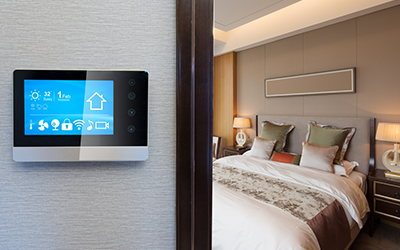
Source: rh2010/People/Adobe Stock.
The word “consumer” encompasses a large and diverse intersecting web of trends, experiences and participation. Within that group, retired and near-retired individuals tend to be lower on the consumption scale, but they still make up a large and growing segment of the consumer population. As shown in a recent S&P Global Market Intelligence 451 Research survey, this group often reports different experiences and challenges compared with other consumer segments.
Spending is slow and steady, but not without worry
Retirees are in a decidedly different stage of their consumer journey compared with those still facing the daily grind of work. For example, they are less susceptible to huge swings in spending activity from quarter to quarter, as evidenced by the 61% who said their spending will stay the same over the next 90 days compared with the previous 90 days. Despite that stability, their overall spending sentiment is negative. They also have much more negative expectations for the direction of the economy over the next 90 days, with only 16% saying they expect it to improve. Why? The main culprit for this negative outlook appears to be the increasing cost of living, cited by 72% of those who plan to spend less over the next 90 days.
Tariffs are contributing to negative sentiment
Uncertainty surrounding the eventual real-world impact of the current administration’s tariff policy has not stopped retirees from feeling that inflation is inevitable. A vast majority (86%) said they feel tariffs will slightly or significantly increase the cost of consumer goods. Groceries (82%), consumer electronics (73%), automobiles (73%) and durable goods (69%) were the areas they most expect to see increases. These are mostly the same concerns expressed by consumers at large, albeit at a higher rate.
Inflation is the top economic threat
More than half of retirees (55%) also view inflation as posing the greatest threat to their personal finances. Again, this is at a higher rate compared with consumers overall (50%), as is their concern over US tariff policies (38% versus 31%), energy prices (30% versus 24%) and the US stock market (22% versus 15%). With that said, the biggest gap between retirees and consumers overall is seen when it comes to changes in government assistance programs (26% versus 10%).
Since many retirees are on fixed income, whether based on social security benefits, disbursements from retirement accounts or a combination of both, changes to their spending power due to inflationary pressures can have a more detrimental effect on them. Combine that with the potential for reduced income from these programs, and the higher anxiety among this group becomes palpable.
Some retirees are weathering the storm
Looking at the previous 90 days, most retirees (57%) said they spent slightly or significantly more than expected, similar to consumers overall (54%). When asked how they financed the increased spending, 28% of retirees said they didn’t need to do anything different than usual. This compares with just 8% of consumers overall who said no changes were necessary to accommodate the increase. Instead, consumers overall had to use credit cards, earn more money, use “buy now, pay later” or take out a line of credit at significantly higher rates than retirees to make ends meet.
Category spending shows how retirees have recalibrated
Despite having greater stability, retirees are not completely immune to broader consumer spending trends. If anything, they can be more adversely affected due to less financial flexibility compared with consumers overall. The effect of inflationary pressures and generalized increases in cost of living shines through in how retirees are allocating their household budgets.
Retirees plan to spend more on nondiscretionary items over the next 90 days compared with the previous 90 days. Similar to consumers at large, retirees are putting larger shares of their household budgets toward groceries (+48) and energy/utilities (+25). While their housing costs (+6) are much more stable, they report spending more on insurance (+23) and healthcare (+21). On the other hand, they plan to spend less across all discretionary areas compared with consumers overall. In fact, they have a net negative spending outlook in 11 of the 12 discretionary categories we track.
Want insights on consumer technology trends delivered to your inbox? Join the 451 Alliance.

